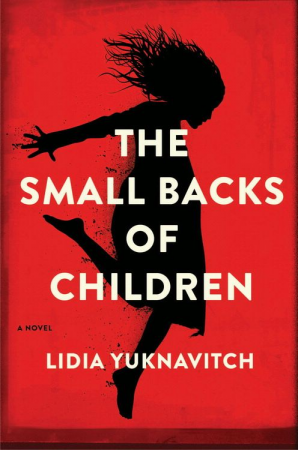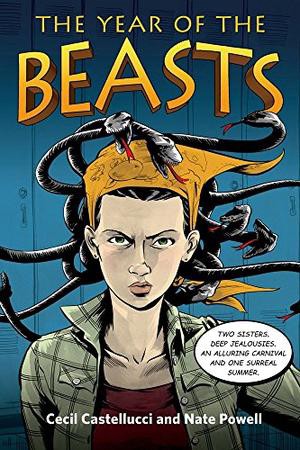Reading Lists
7 Novels About the Reverberations of Trauma
How do you move on after a life-changing event?

I n my novel, Eden, two sisters survive a childhood abduction, the aftermath of which sets their lives on very different courses. We find out what happened to them when they were kidnapped as teenagers, but more integral is what happened to them afterwards. How do you return to your everyday life after experiencing a violent, traumatic event? Is your life forever changed? Are you still the same person? Do you try to forget what happened, or do you try to integrate it?
There is a traditional narrative about trauma in books and films: after much torment or self-destructive behavior, a protagonist finds relief by telling their story in a moment of emotional catharsis, hopefully in a therapist’s office or in a safe space with a supportive, trusted friend. While this is tremendously healing and empowering, what we often don’t see is that healing is an ongoing practice. There is still an “after” after the therapy session, after the meeting, after the purge of tears. We still have to go home, wherever that is, if home truly exists in the “after,” if it ever existed to begin with. And often we have to rebuild it.
Each of these novels is a complex meditation on trauma, many of them addressing the subject through structure as well as story. These books explore how survivors process and communicate their pain and how oftentimes their stories go unheard by others, or are conveniently forgotten. But trauma is persistent; it is embedded in the circuits of our lives and in the power structures of our society. It exists everywhere and it does not degrade simply because we prefer not to see it. As in Toni Morrison’s Beloved, it lives on in the atmosphere, in the soil, in the cities, in the water. And whether we are the perpetrators or the victims, the beneficiaries or the sufferers, the willfully blind or the ones who see very real ghosts, the historical continuously infects the intimate. In order to bear witness, we must first open our eyes.
Beloved by Toni Morrison
Toni Morrison’s masterpiece on the ongoing brutalities of slavery mixes realism and the supernatural in a novel inspired by the true story of an escaped slave who kills her child rather than have her returned to the plantation. In this Pulitzer Prize-winning book, Sethe and her family are haunted by a ghost and later by a mysterious young woman who arrives on their doorstep calling herself, Beloved. Lyrical, difficult, seductive, cruel, Beloved is the eternal return of history, of what we thought we left behind for dead.
The Small Backs of Children by Lidia Yuknavitch
Fractured, scattershot, compulsive, agitated, The Small Backs of Children refuses to follow any one path and calls everything into question. A photographer takes a picture of a girl who escapes an explosion in a war-torn country. A writer is re-traumatized by this photo. A group of artists decides to find this girl. A girl is already found, already an artist. One person escapes brutality, another person is aroused by brutality, another person profits from brutality, another needs brutality to make art. Where do these motives comes from? How are they connected? Lidia Yuknavitch tightly intertwines sex and violence and gender and art and war, showing how these elements are written on the body. The book’s discursiveness demands your attention and shakes you out of your anesthesia.
An Untamed State by Roxane Gay
The first half of Roxane Gay’s debut novel is hard to stomach: an unrelenting depiction of a woman kidnapped, raped, and held for ransom. Mireille is held for 13 days while visiting family in Haiti because her wealthy father refuses to pay up. But in the second half of the novel, when Mireille returns to her life and walks through American suburbia as a stranger in a strange land, the story shimmers with intersecting layers of identity. There are no easy answers in Gay’s novel, there is no happily ever after because no one emerges unscathed. We don’t expect forgiveness and the characters don’t give it. Gay focuses her lens on more complex questions: Who are the people that commit these crimes and who are the people we become if we survive?
The God of Small Things by Arundhati Roy
“Anything can happen to Anyone,” thinks Estha as he stirs jam in his family’s factory. “It’s best to be prepared.” An amalgam of memories, relatives, politics, and storylines this Booker Award-winning novel follows fraternal twins Estha and Rahel through the incidents of their childhood that caused Estha to be “Returned” to his father. Fearing that the Orangedrink Lemondrink movie theater molester will come after him, Estha and Rahel build a boat to escape, leading to a horrible accident. Their divorced mother is locked in her room for having an affair with an untouchable-caste man, and the twins are separated for years until Estha is “Re-Returned.” Roy’s disorienting timeline is a kaleidoscope of wanderings and anguish, reflecting the magical realism that is childhood, with its strict social structures, its very real dark forces, and its promises of love.
The Year of the Beasts by Cecil Castellucci, illustrated by Nate Powell
This hybrid YA novel/graphic novel is moody, strange, and tormented. Alternating chapters of prose and comics, this story is a watery, inky portrait at the nexus of truth and myth. Did something truly horrible happen to Tessa, or did she read it in a book? Are you a regular teenager or do you have magical powers? And what if you don’t want the power you have? The Year of the Beasts explores how the fantastical offers a place for Tessa to make sense of a summer tragedy. It will melt whatever has turned you to stone.
Mysterious Skin By Scott Heim
Two young boys are sexually abused by their little league coach: one can’t remember the episode, and the other can’t forget it. Brian finds himself in the crawl space of his house late at night and, unable to account for his previous whereabouts, believes he was abducted by a UFO. Neil falls for the affection and attention of the coach and confuses it with love. As the two boys move on from high school, Neil becomes a hustler and Brian continues to be obsessed with aliens, his dreams, and his missing memory. This novel, which was made into a film by Gregg Araki, delves into the complexities of desire and youth, complicity and guilt, how we cling to what happened or the fantasy that it didn’t.
Mrs. Dalloway By Virginia Woolf
“Nothing has really happened until it has been described,” Woolf once told her biographer. Mrs. Dalloway unspools its story as the title character, Clarissa Dalloway, prepares to throw a party, and Septimus Smith, a WWI veteran suffering from post-traumatic stress disorder, struggles with the memory of losing his friend in battle. The stream-of-consciousness style flows between characters and back and forth in time: Clarissa revisiting her youth and lost chances for love, Septimus held captive by hallucinations. They exist in separate worlds until Septimus’ suicide is mentioned at Clarissa’s party. The way in which Woolf tells this story — sometimes confused, sometimes resting for a moment, sometimes delighted, often tormented — mirrors her characters in their plight to wake themselves up.
















